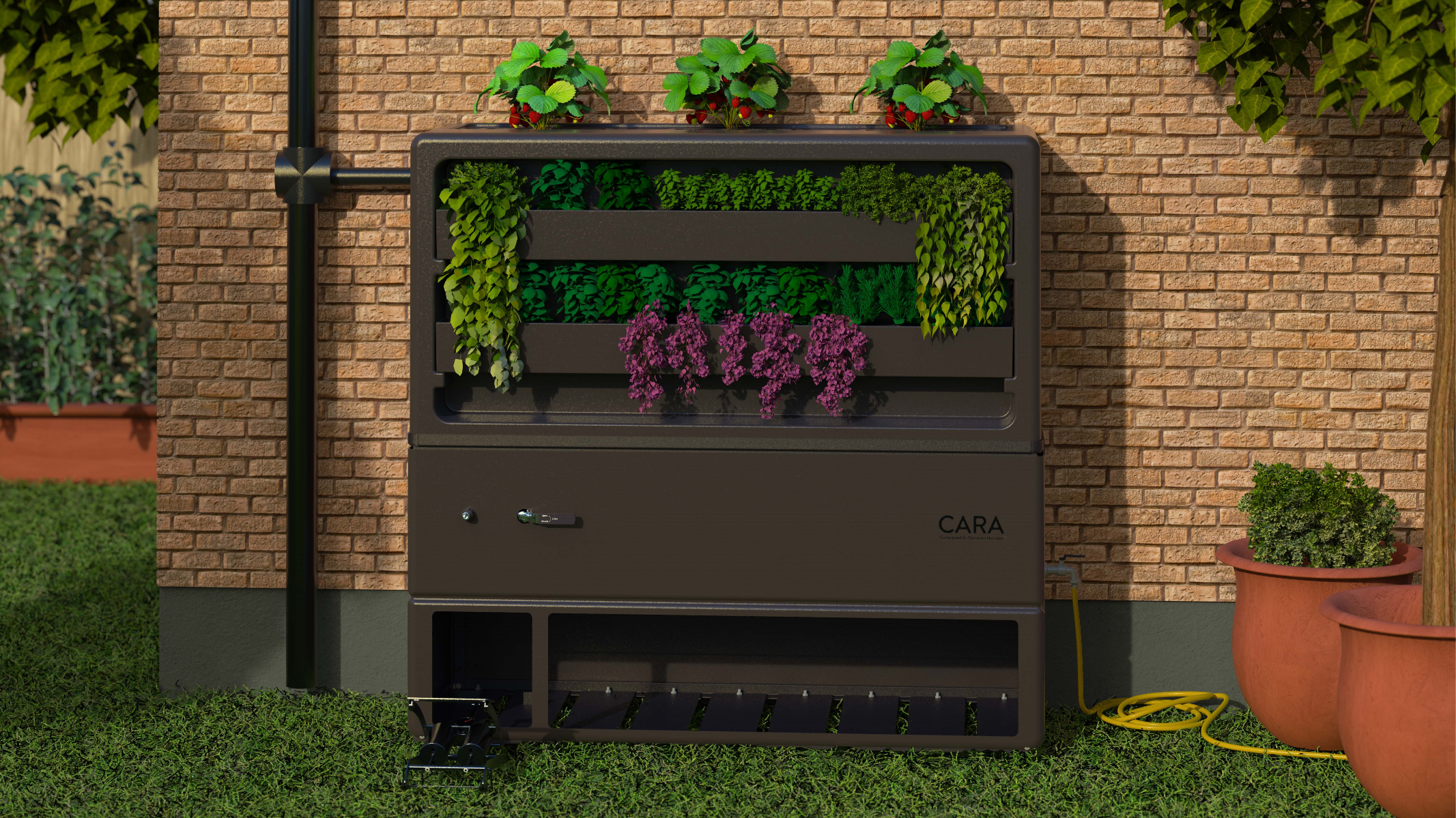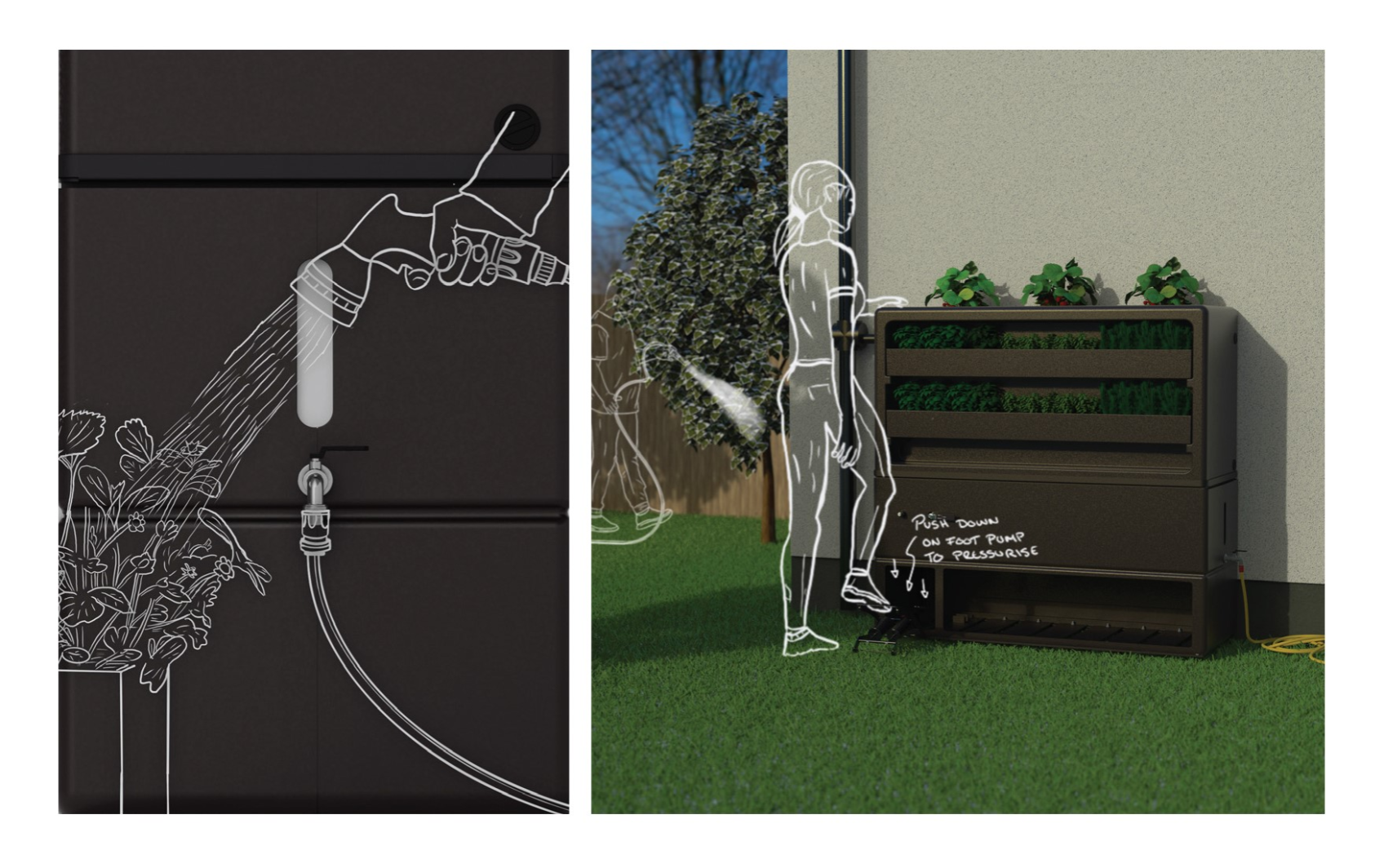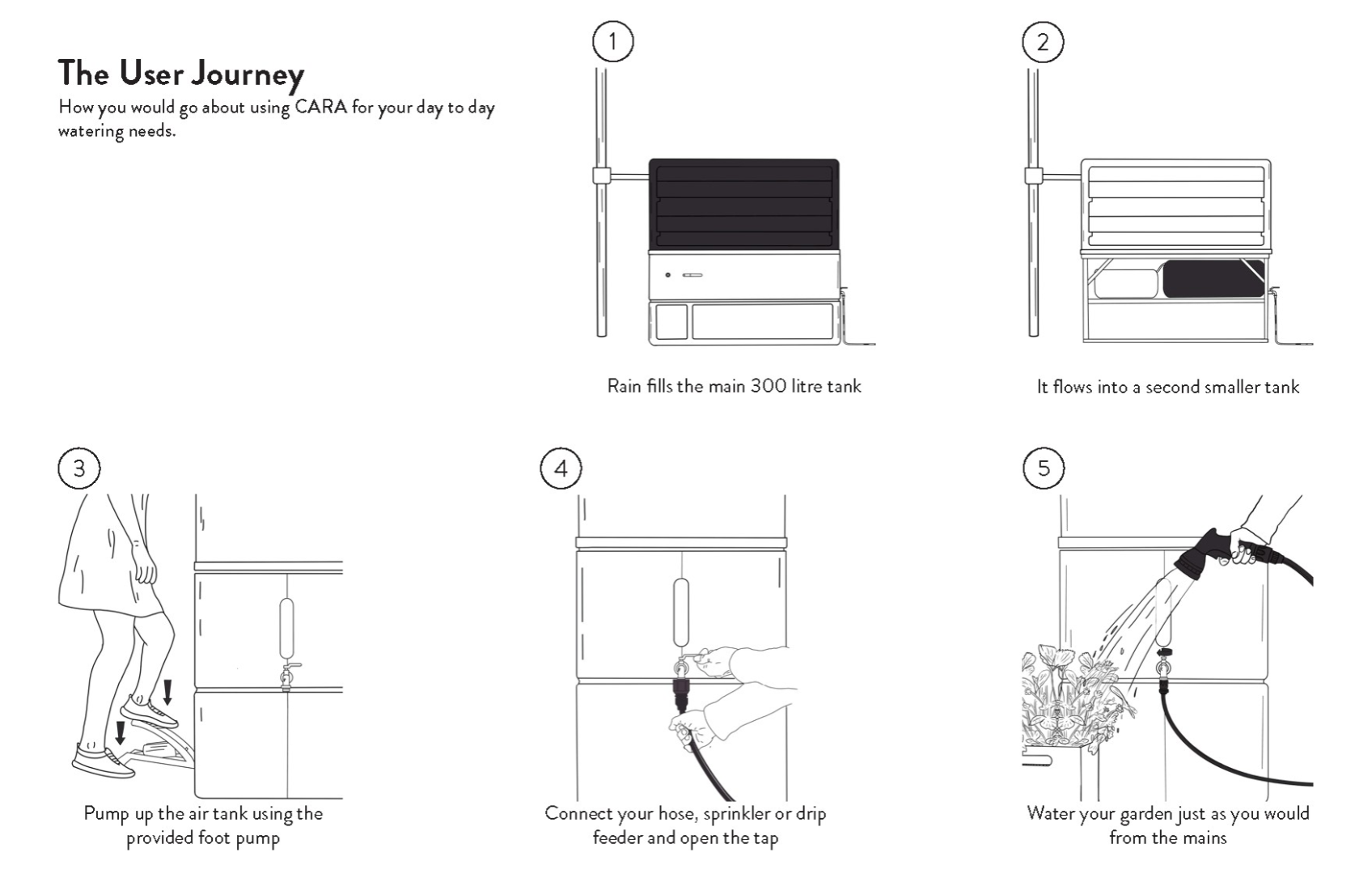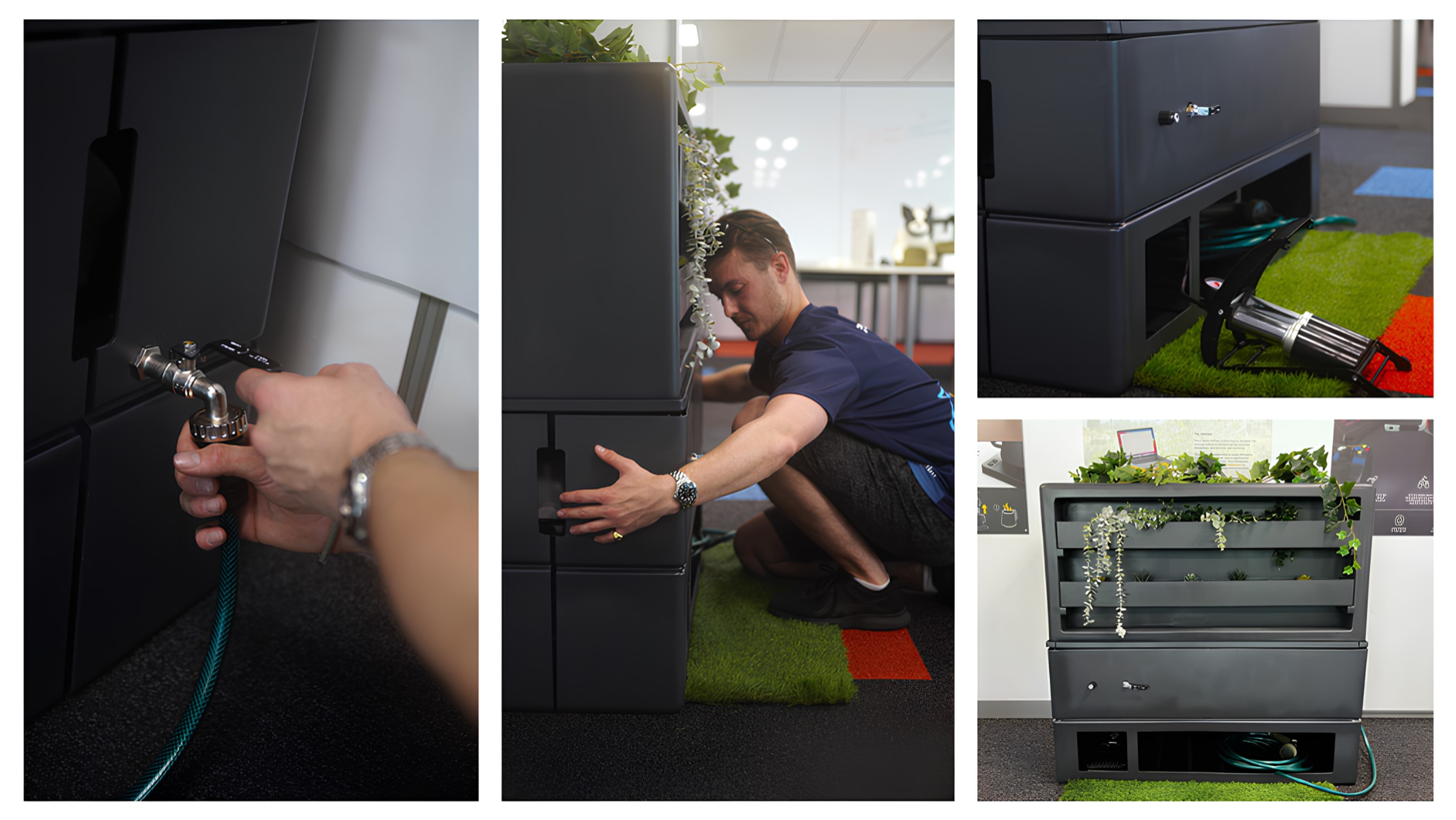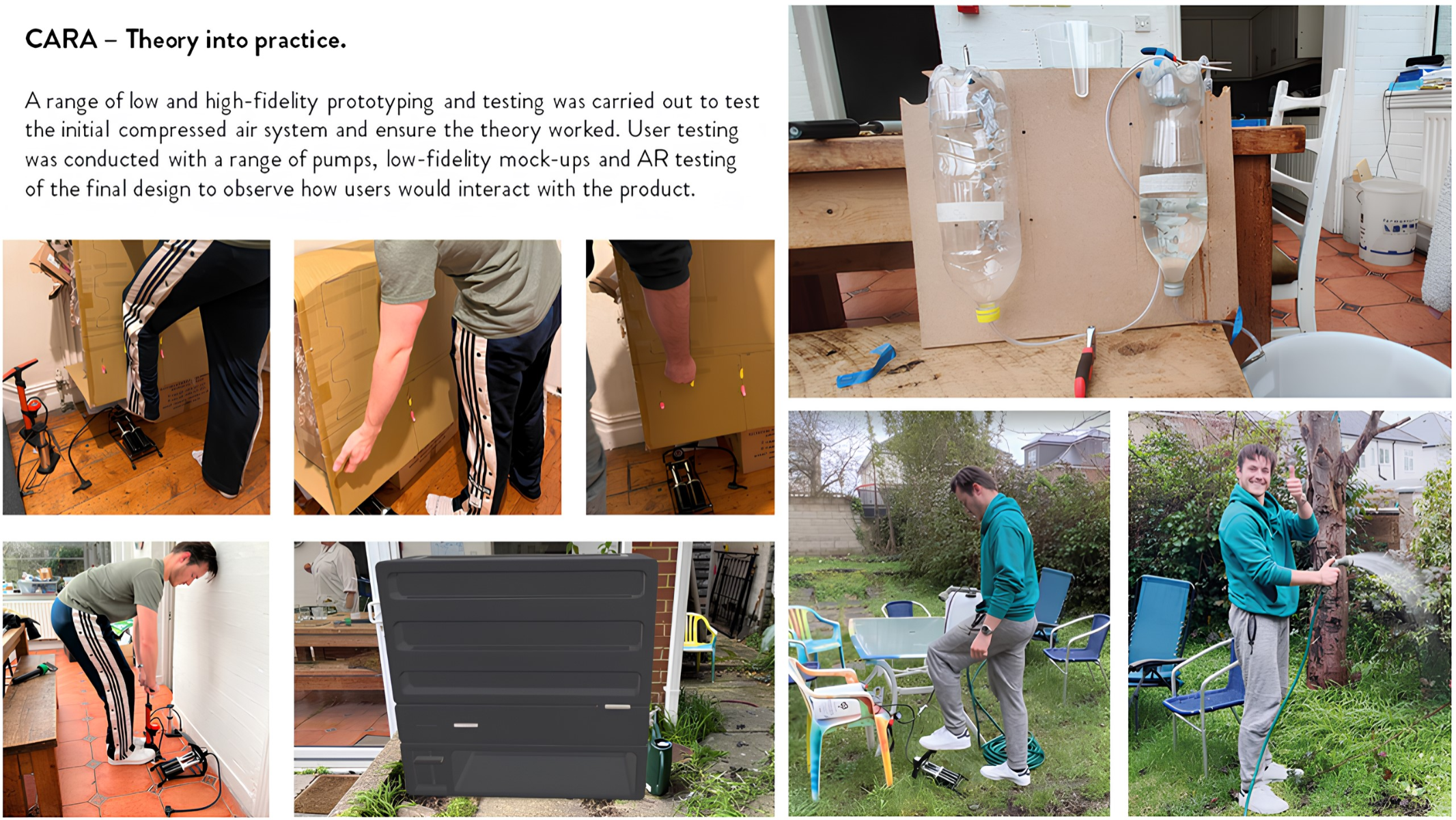Oliver Lloyd
Product Design Bsc
Bournemouth University
Graduates: 2023
Specialisms: Product Design / Sustainable Design / Design for Social Good
My location: Bournemouth, United Kingdom


Oliver Lloyd

First Name: Oliver
Last Name: Lloyd
University / College: Bournemouth University
Course / Program: Product Design Bsc
Graduates: 2023
Specialisms: Product Design / Sustainable Design / Design for Social Good
My Location: Bournemouth, United Kingdom
Website: Click To See Website
About
Cara - A next generation rainwater collector & planter
What does it do?: CARA is a redesigned rainwater collector that uses a basic foot pump and compressed air to pressurise the water stored inside to a similar pressure to that of mains water, allowing gardeners to connect a hose, sprinkler or other watering tool directly to their rainwater collector and use it just as easily as they would the mains supply. Making it easier for everyone to “Switch from Mains to Rains”. How does it work?: CARA collects rainwater in its main 300-litre tank through a standard downpipe diverter that can be purchased from any hardware store. As the water is diverted into the tank, it begins to flow through a one-way valve into a second smaller pressurisable water tank that holds 40 litres of water. This is enough to water an average-sized garden. The 40-litre tank is connected to an air tank via a ball valve. The user can pressurise the air inside the air tank to approximately 50 PSI using the provided dual-cylinder foot pump. This compressed air runs through a pressure regulator that ensures a steady stream of air at 25 PSI flows into the 40-litre tank, pressurising the water stored inside at a constant rate. When ready, the user simply connects their hose to the tap, and the water flows out at 1 BAR of pressure, just as you would expect from the mains. Allowing them to water their garden using collected rainwater instead of the mains water supply. How is it different?: CARA stands out from other products in the market due to its unique features. It is the sole solution capable of pressurising water without requiring electricity or an electric pump, allowing it to function anywhere in the world as long as there is occasional rainfall. Its design emphasizes user-friendliness, providing easy access to the pressurisation system for hassle-free maintenance and repair. Using off-the-shelf components, CARA ensures simplicity and clarity for users, enabling them to comprehend and repair or replace any malfunctioning parts easily. Moreover, CARA takes a novel approach by integrating plant life, effectively merging with your garden and creating an interactive experience. It features a modular design, and users can customize the system by connecting smaller or larger tanks based on their specific needs, further enhancing its versatility and adaptability. With CARA, pressurised rainwater harvesting is accessible to all who need it. The Design Process: Project research included surveys, interviews, focus groups, and analysing existing products. Questionnaires identified key issues with current solutions, expert interviews provided insights into user needs, and focus groups gathered feedback on concept designs. From this, the key criteria CARA had to address were: 1.) Provide enough pressure without using electricity to allow users to connect hoses or sprinklers, making watering easy and less labour-intensive. 2.) Repairability - The system has to be easy to repair and require no outside help. 3.) Aesthetics - The product invites people to integrate it into their garden and interact with it. Development involved generating early concepts and narrowing them down based on user feedback. The final design was selected on how well it addressed these criteria. A detailed design stage involved further research on tank shape, pressure handling, pneumatics, materials and manufacturing. Prototyping played a crucial role in testing functionality, with many test rigs to test water pressure and cardboard models to test usability. The design was refined through iterative prototyping and feedback from users and experts. Resulting in a design that is repairable, blends into the garden and is able to pressurise the water stored inside it.
Competitions


